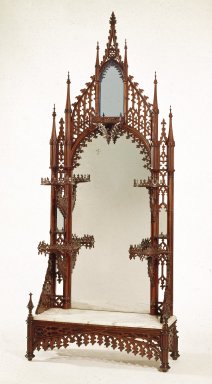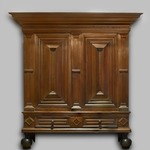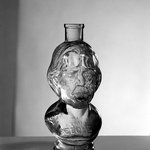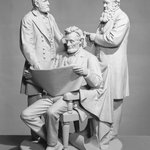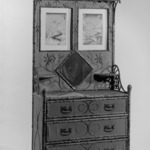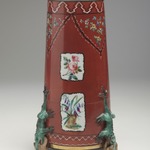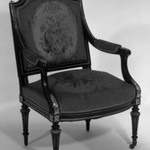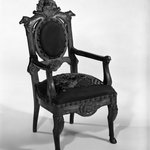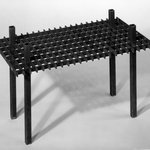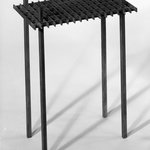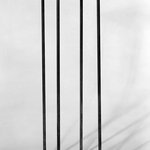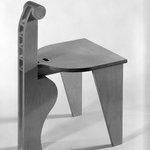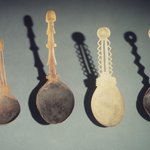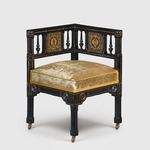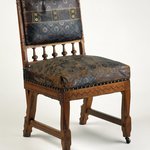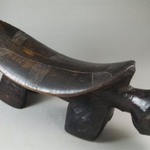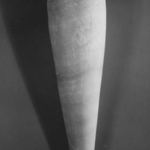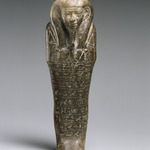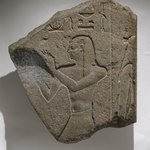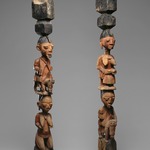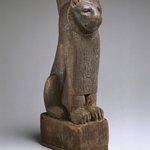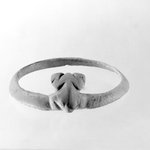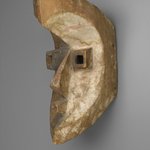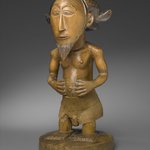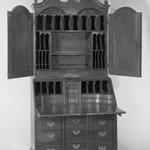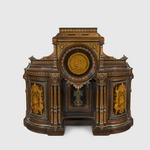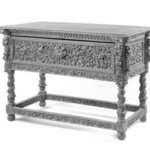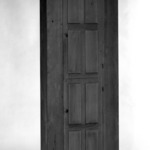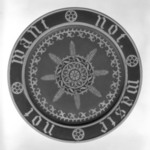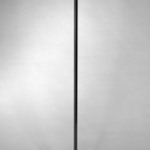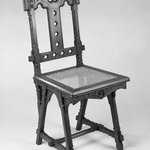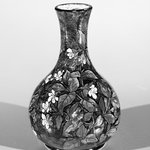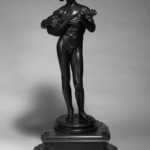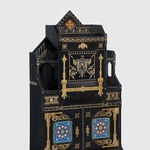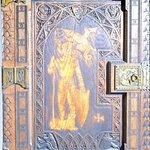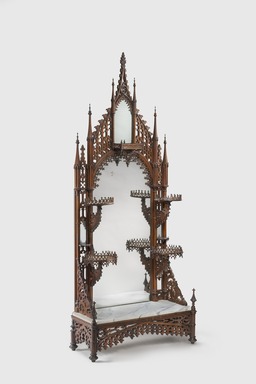

Etagere, ca. 1845–1855. Rosewood veneer, wood, paint, tin-mercury amalgam mirrored glass, marble, steel hardware , 81 × 33 5/16 × 13 1/2 in. (205.7 × 84.6 × 34.3 cm). Brooklyn Museum, H. Randolph Lever Fund, 76.101. Creative Commons-BY (Photo: Gavin Ashworth, 76.101_GavinAshworth.jpg)
Etagere
Decorative Arts and Design
This étagère, which served dual functions as a mirror and a display piece for small art objects, takes its shape from a pointed Gothic arch. Embellished with elaborate tracery, crockets, and finials, the étagère exemplifies an early phase of the Gothic Revival, when designers applied architectural aspects directly to furniture forms.
MEDIUM
Rosewood veneer, wood, paint, tin-mercury amalgam mirrored glass, marble, steel hardware
DATES
ca. 1845–1855
DIMENSIONS
81 × 33 5/16 × 13 1/2 in. (205.7 × 84.6 × 34.3 cm) (show scale)



MARKINGS
no marks
SIGNATURE
no signature
INSCRIPTIONS
no inscriptions
COLLECTIONS
Decorative Arts and Design
ACCESSION NUMBER
76.101
CREDIT LINE
H. Randolph Lever Fund
CATALOGUE DESCRIPTION
White marble top; four turned and fluted feet, the front two topped with pointed finials; front apron of base in overall shape of widened Gothic arch of Gothic jig-cut decoration; marble top has bevelled edge and is inset at front corners to allow for finials on front feet; back of etagere is elongated vertical Gothic arch consisting of jig-cut rosewood set between four columns which terminate in Gothic turrets; main mirror of back has round top framed by Gothic jig-cut work; four bracket shelves, two on each side of mirror; lower shelves supported by jig-cut brackets; shelves are eight inward lobed shapes, Gothic and jig-cut laminated rosewood railing suspended from bottom of shelf following shape of shelf, upper shelves supported by Gotrhic jig-cut brackets; shelves are round and have Gothic jig-cut and laminated rosewood galleries; two small shelves on either side of etagere-back between the upper and lower bracket shelves; shelves are lobe-shaped with double finials at point of each lobe; small mirror framed in Gothic arch at back of each of these small shelves; small rectangular shelf at top of main mirror; has Gothic jig-cut gallery; four quarter arc brackets, each one extending from a corner of the bottom of the shelf are joined at the center with a drop finial; small mirror behind shelf is in Gothic arch jig-cut frame; on either side of small mirror is a column termintating in pointed Gothic finial; stylized leaf shape terminates overall Gothic arch shape of back; back visually joined with base by two Gothic jig-cut triangular brackets which incorporate stylized bird motif; brackets rest on either end of base top on short sides against aback of etagere; small piece of jig-cut laminated gallery or railing in separate envelope.
CONDITION: Front apron: rosewood veneer chipped in fifteen places; one stylized suspended cruciform of apron scheme has broken off and is missing, some glazing of finish along molding; two patches of black encrustation on right side; front right foot is split beneath turret. Lower left shelf: gallery in four lobes is broken; gallery gone in fifth lobe; bracket has been broken and wired together; one jig-cut drop has broken off. Lower right shelf: gallery broken in four lobes; one jig-cut drop broken off bracket. Upper left shelf: gallery broken in three places, suspended railing completely missing; upper right shelf: gallery broken in four places, about half of it is there, suspended railing completely missing, bracket has been broken and is wired together; upper rectangular shelf: white paint spot on top, drops or suspended railings which once went around outer edge of shelf are missing; applied molding or ornament at bottom of leaf finial of etagere back is missing.
MUSEUM LOCATION
This item is not on view
CAPTION
Etagere, ca. 1845–1855. Rosewood veneer, wood, paint, tin-mercury amalgam mirrored glass, marble, steel hardware
, 81 × 33 5/16 × 13 1/2 in. (205.7 × 84.6 × 34.3 cm). Brooklyn Museum, H. Randolph Lever Fund, 76.101. Creative Commons-BY (Photo: Gavin Ashworth, 76.101_GavinAshworth.jpg)
IMAGE
overall, 76.101_GavinAshworth.jpg. Gavin Ashworth, 2020
"CUR" at the beginning of an image file name means that the image was created by a curatorial staff member. These study images may be digital point-and-shoot photographs, when we don\'t yet have high-quality studio photography, or they may be scans of older negatives, slides, or photographic prints, providing historical documentation of the object.
RIGHTS STATEMENT
Creative Commons-BY
You may download and use Brooklyn Museum images of this three-dimensional work in accordance with a Creative Commons license. Fair use, as understood under the United States Copyright Act, may also apply.
Please include caption information from this page and credit the Brooklyn Museum. If you need a high resolution file, please fill out our online application form (charges apply).
For further information about copyright, we recommend resources at the United States Library of Congress, Cornell University, Copyright and Cultural Institutions: Guidelines for U.S. Libraries, Archives, and Museums, and Copyright Watch.
For more information about the Museum's rights project, including how rights types are assigned, please see our blog posts on copyright.
If you have any information regarding this work and rights to it, please contact copyright@brooklynmuseum.org.
RECORD COMPLETENESS
Not every record you will find here is complete. More information is available for some works than for others, and some entries have been updated more recently. Records are frequently reviewed and revised, and we welcome any additional information you might have.
